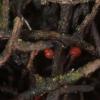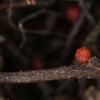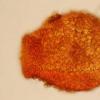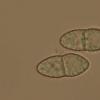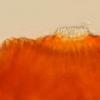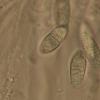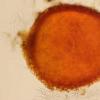
20-12-2025 15:47
Mirek GrycHi.These grew on pine wood that was heavily covere

18-12-2025 21:17
Pol DebaenstThe identification took me to Byssonectria deformi

15-12-2025 07:09
 Danny Newman
Danny Newman
indet. Rutstroemiaceae sp. on unk. fallen leavesMc

19-12-2025 10:10
Patrice TANCHAUDBonjour, récolte réalisée en milieu dunaire, a

18-12-2025 17:23
 Bruno Coué
Bruno Coué
Bonjour,je serais heureux d'avoir votre avis sur c

18-12-2025 18:07
Margot en Geert VullingsThese plumes were found on rotten wood.They strong

17-12-2025 18:35
 Michel Hairaud
Michel Hairaud
Bonjour à tous/Hi to everyone I am passing along

15-12-2025 15:48
 Danny Newman
Danny Newman
Melanospora cf. lagenaria on old, rotting, fallen
 Hello,
Hello,while making a section of Scutellinia olivascens using the stereomicroscope, I noticed little scarlet nectrioid fungi growing nearby.
They are from the Czech Republic, from a locality in 180 m a.s.l., and were growing on tiny roots in a very wet place, close to a little pond (the most frequent tree in the locality is Salix). Apothecia grow in a group.
Ascospores distinctly warted, 1-septate, (14.9) 15.6 - 16 (16.2) × (6) 6.1 - 6.8 (6.9) µm, Q = 2.3-2.7
Me = 15.7 × 6.4 µm; Qe = 2.4
I used the key by Hirooka et al. 2012 (https://www.ncbi.nlm.nih.gov/pmc/articles/PMC3310236/)
It leads me to the point 19, when one has to decide between N. australiensis (a bit smaller ascospores + known from Oceania) and N. noackiana (totally wrong spore size + known from Brazil). When I make a compromise and jump on „known from alpine regions" (instead of temperate to subtropical), I would end at N. berberidicola. But the substrate in my collection is not Berberis :-)
Therefore, I think I am probably searching in a wrong genus.
Could you give me an advice, please?
Thank you, Zuzana



thank you very much!
It seems to be difficult to determine this fungus with certainty without cultivating or sequencing. According to this paper, the spores in my specimens are small for the true T. veullotiana, but species with a better fitting spore size are not known from Europe.
https://www.researchgate.net/publication/229015577_Multigene_phylogenetic_analyses_of_the_Thelonectria_coronata_and_T_veuillotiana_species_complexes#fullTextFileContent
Zuzana



